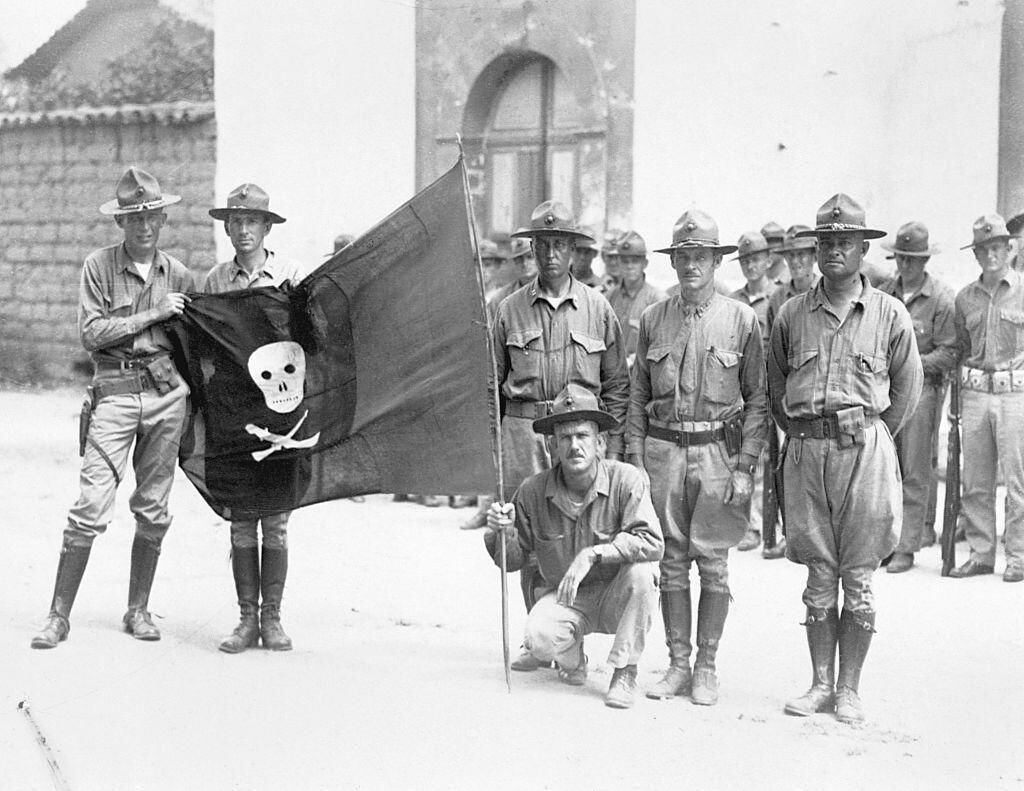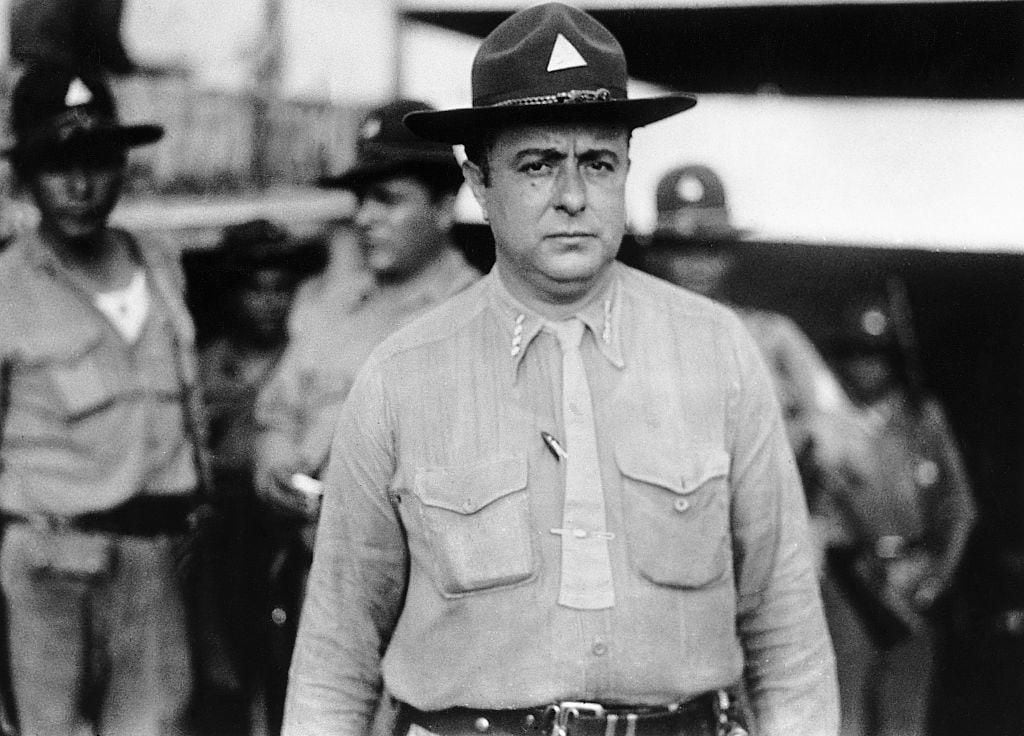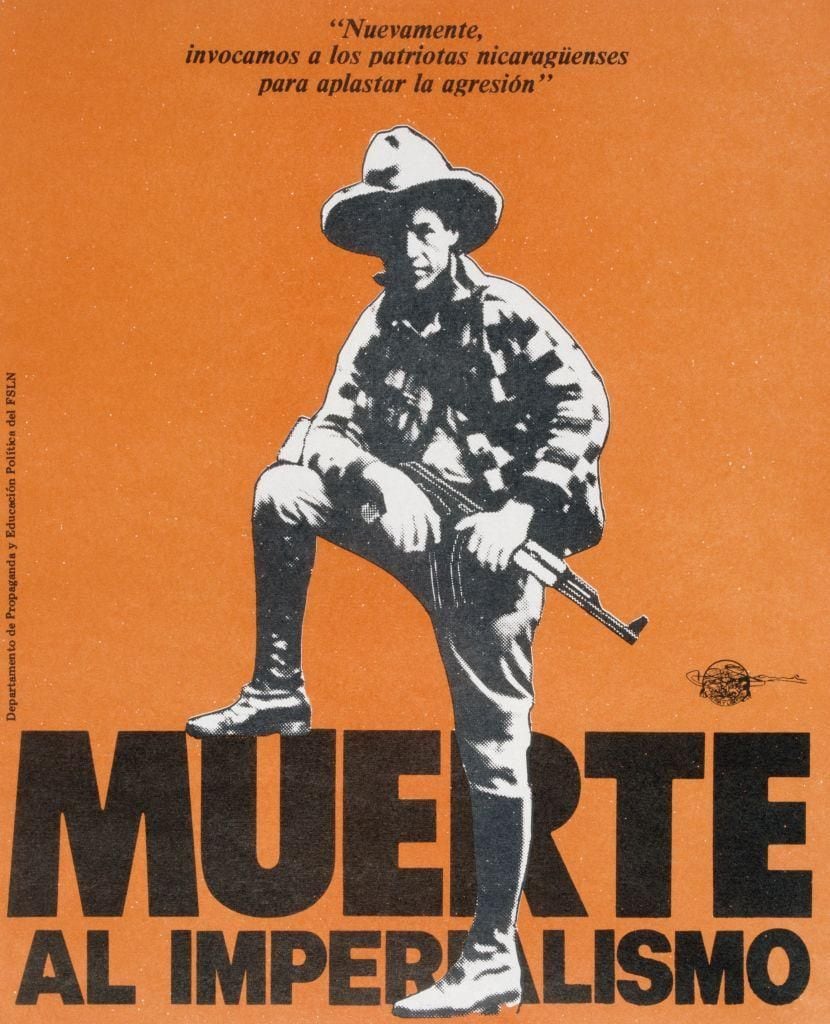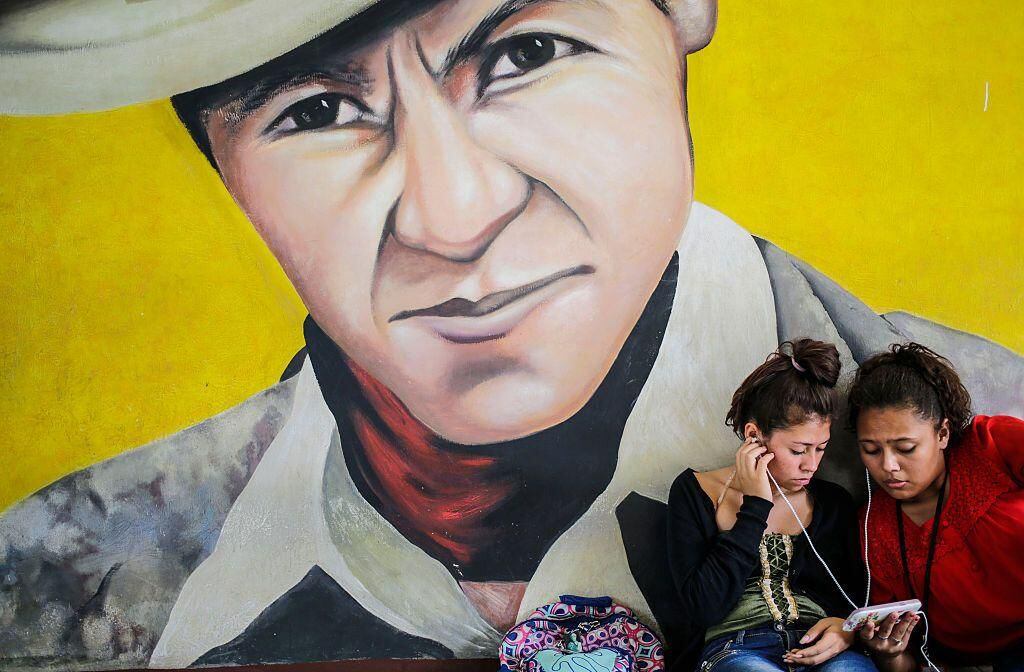:quality(75)/cloudfront-us-east-1.images.arcpublishing.com/elcomercio/JPTR37KTTZGURB2OR6VGEZQWLI.jpg)
When he went to the presidential palace of La Loma, in Managua, on the night of February 21, 1934, for dinner, Augusto C. Sandino did not imagine that it would be the last of his life.
This Wednesday 90 years have passed since his death in a treacherous ambush, an event that contributed to expanding the myth of the Nicaraguan guerrilla leader and marked a turning point in the history of the Central American country.
LOOK: Is Avdíivka’s fall a sign that Russia is changing the course of the war in Ukraine?
The figure of Sandino continues to generate debate among Nicaraguans: for some he is a symbol of resistance and national sovereignty; For others, a relentless fighter with more of a thirst for power than ideas.
The fact is that His fight marked a turning point in the history of Nicaragua, whose repercussions are still felt today.
the murder
On February 21, 1934, Sandino attended a dinner at the Presidential Palace of La Loma, invited by President Juan Bautista Sacasa.
Sacasa came to power the previous year, when US troops withdrew from Nicaragua and what appeared to be a phase of reconciliation between the country’s diverse and antagonistic political forces began.
One of them was the guerrilla group commanded by Sandino, which had been fundamental in the fight against US intervention. until the final withdrawal of his marines.
Sandino’s side, which had strong support from peasant communities, signed peace with the Sacasa government and consolidated itself as a kind of autonomous power with political and military influence in the country.
Upon leaving dinner, Sandino and his four companions were detained by members of the National Guard, then led by Anastasio Somoza García – who three years later took power and began a regime of more than four decades controlled by his family -.
Sandino didn’t expect it: “I think he was guilty of a certain naivetybecause they made him believe that the path of negotiation was a possibility after the departure of the US Navy from Nicaragua”, explains to BBC Mundo historian Óscar René Vargas, author of the biographical book about the guerrilla “Sandino: Floreció al filo”. . ..of the Sword.”
Two of his companions (his father and the writer Sofonías Salvatierra, Sacasa’s Minister of Agriculture) were arrested and Sandino was taken along with his two lieutenants to an open field on the outskirts of Managua, where they were shot.
Sandino’s fight
To understand what happened that night we have to go back to the mid-1920s, when two irreconcilable enemies fought for power: the conservatives and the liberals, to which Sandino belonged for some time.
The United States, which had economic interests in the country, continually interfered in Nicaraguan politics – generally in favor of the conservatives – and sent marines there.
To end a war between conservatives and liberals, in 1927, the the Blackthorn Pactwhich implied the permanence of the conservative government until elections mediated and supervised by the USA were held.
Sandino refused to sign it and began recruiting more peasants into his guerrilla: the Army in Defense of the National Sovereignty of Nicaragua (EDSN), which fought against the marines and the Nicaraguan National Guard.

The guerrilla grew rapidly and at the beginning of the following decade it achieved important victories against the North American forces, which At the end of 1932 they left Nicaraguacoinciding with the election of the liberal Sacasa as president.
Sandino and Sacasa reached a peace agreement, while The National Guard led by Somoza was in charge of security of the country, although the Sandinista guerrillas remained partially armed and active.
It was then that it was decided to kill Sandino. But who was it and why?
Who and why killed him?
The official version is that Anastasio Somoza planned the assassination together with 14 members of the National Guard – a rival of the Sandinista guerrillas – behind President Sacasa’s back.
Somoza himself declared two years later that he had killed Sandino. by order of the then American ambassadorArthur Bliss Lane.
“Somoza was in collusion with the American embassy, this is already known, it has been proven historically”, says historian Oscar René Vargas.
Humberto Belli, however, doubts this.
“Somoza wanted to wash his face a little and then blamed the American ambassador, but The United States had no great interest in Sandino’s death because he had already left the country. Back then, Sandino was a local problem,” he argues.

And why was he murdered?
“For the National Guard, it became almost a political imperative to put an end to Sandino,” says Humberto Belli.
The writer attributes the murder to the fact that the guerrilla leader “had a stronger military force than previously believed.”
“The General Staff of the National Guard came to the conclusion that it could not have an armed feudal state within its own national territory and that the only solution was to kill Sandino.”
Óscar René Vargas, in turn, claims that “the Sandinista movement controlled around 6 departments, therefore established an alternative power in Nicaragua This could not be accepted either by the United States or by the country’s economic class.”
Sandino, the historian points out, “defended an agrarian reform that put at risk the model of accumulation based on large tracts of land. It was a problem for the ruling class and that’s why they decided to kill him”, he explains.
Sandino’s ideas
Augusto César Sandino left no written legacy, except letters with which he communicated with the authorities of the time, and he neither subscribed to a specific ideology nor formulated a new one.
For Óscar René Vargas, Sandino’s ideology is a mixture of “anti-imperialism, nationalism and an agrarian vision”not necessarily leftist, although he collaborated with leftist leaders such as the Salvadoran communist Agustín Farabundo Martí, who was his secretary and later colonel.
He points out that although Sandino advocated social reforms, his movement was based on the principles of sovereignty and self-determination.
He was significantly influenced by the Mexican Revolution, which led him to propose “Nicaragua’s agrarian reformwhich was a revolutionary proposal within the canons in force at the time”, according to Vargas.

In turn, writer Humberto Belli offers a critical perspective that contrasts with Sandino’s more traditional and heroic views.
“He never stopped thinking about coming to power, he wanted to be president and there are many quotes and historical evidence that prove this. If you achieved this, he would have been a bloodthirsty and totalitarian leader or a dictator,” he says.
Belli describes Sandino’s ideological orientation as “a very strange mixture”, influenced by his time in Mexico and his affiliation with the spiritual magnetic school of the Universal Commune, a current that mixes theosophy, spiritualism and beliefs in energy and reincarnation.
As for his agrarian vision, Belli recognizes that Sandino talked about distributing land and forming peasant cooperatives, but argues that his proposals were limited.
“He was a very illiterate man. He knew how to read and write, but he didn’t go beyond that., and I didn’t have a very coherent idea of what I was going to do for Nicaragua. Yes, he talked about land distribution, but that was it,” he says.
The legacy

Regarding Sandino’s legacy, Óscar René Vargas highlights that it marked a turning point by being “the first time in history that a peasant guerrilla managed to defeat US intervention”.
The second historical lesson, he continues, “is that Sandinismo marked an era in Latin America, where for the first time a solidarity movement developed” that crystallized, for example, in the social uprising in El Salvador in 1932.
The third is that “it has been a watershed in the political history of Nicaragua” since “the anti-imperialist nationalist effect is an element that endures“, he guarantees, despite “unfortunately having been used by the Ortega-Murillo regime”.
Under the banner of Sandinismo, Daniel Ortega and his wife and vice president Rosario Murillo today govern Nicaragua, where there are no free elections and hundreds of political dissidents – including historical Sandinistas and Óscar René Vargas himself – were arrested and later banned.
Vargas accuses Ortega and Murillo of having tarnished Sandino’s figure: “Before the dictatorship, Sandino had a national consensus, but now a sector of Nicaraguan society considers Sandinismo to be bad, as if Ortega-Murillo were an extension of Sandino”.
“I compare the Sandino movement with those of Emiliano Zapata and Pancho Villa in Mexico, who were slandered by the Mexican elite and years later considered national heroes. I think the same will happen with Sandino,” he says.
Humberto Belli, however, has a very different opinion about Sandino’s contribution to Nicaragua and Latin America.
Belli questions the heroic narrative built around the Nicaraguan guerrillas, which he considers a myth made after the fact by the Sandinista movement that fought against the Somoza family dictatorship until finally gaining power in 1979.

“From the outside it looks like he was a heroic guerrilla who fought against American intervention, but people don’t understand the nuances.”
The writer defines Sandino as a “very violent man” whose fight was marked by cruelty, with war tactics such as “vest cutting” with which his fighters cut off the heads and arms of their enemies.
And he believes that the decision not to sign the Hawthorn Pact and take up arms, which started his guerrilla war and the myth that surrounds him, only served to provoke an unnecessary war.
“Sandino’s legacy was a useless legacy of blood,” he says.
Source: Elcomercio
I am Jack Morton and I work in 24 News Recorder. I mostly cover world news and I have also authored 24 news recorder. I find this work highly interesting and it allows me to keep up with current events happening around the world.






